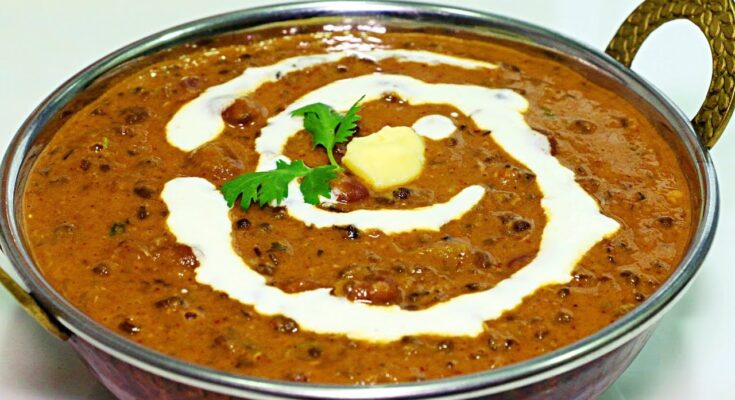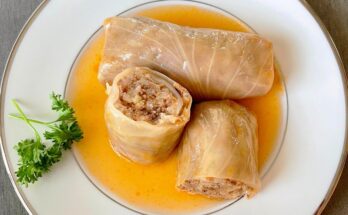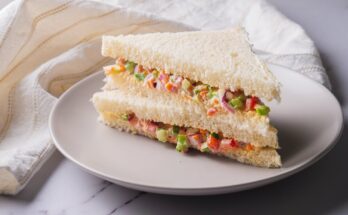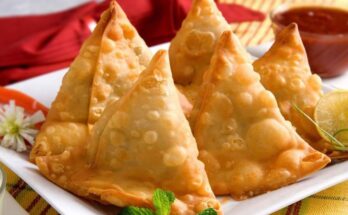Dal Recipe: Dal, also known as lentil soup, is a staple dish in Indian households. It is not just a comfort food but also a nutritious and protein-rich meal. Whether served with rice or roti, Dal is loved for its simplicity, warmth, and rich flavor.
Why is Dal a Staple in Indian Cuisine?
Dal is an everyday dish in Indian cuisine because of its affordability, ease of preparation, and high nutritional value. Every region in India has its own version of Dal, making it a versatile dish.
Health Benefits of Dal
- High in protein and fiber
- Rich in essential vitamins and minerals
- Supports digestion and gut health
- Keeps you full for longer
Types of Dal
There are various lentils used in making Dal. Each type has a unique texture, taste, and cooking time.
Popular Lentils Used for Dal
- Toor Dal (Pigeon Pea Lentils): Most commonly used in Indian households
- Moong Dal (Yellow Lentils): Light and easy to digest
- Masoor Dal (Red Lentils): Cooks quickly and has a smooth texture
- Chana Dal (Split Bengal Gram): Has a nutty flavor and is often used in thick curries
- Urad Dal (Black Lentils): Used in Dal Makhani and South Indian dishes
Each of these lentils can be used individually or mixed to create different Dal variations.
Ingredients Required
To make a basic Dal, you need:
Essential Ingredients:
- 1 cup lentils (Toor, Moong, or Masoor Dal)
- 3 cups water
- 1 small onion, chopped
- 1 small tomato, chopped
- 2 cloves garlic, minced
- 1-inch ginger, grated
- 1-2 green chilies, chopped
- 1 tsp turmeric powder
- 1 tsp cumin seeds
- 1 tsp mustard seeds
- ½ tsp red chili powder
- Salt to taste
- 2 tbsp ghee or oil
- Fresh coriander leaves for garnish
Optional Ingredients for Enhanced Flavor:
- Curry leaves
- Hing (asafoetida)
- Garam masala
- Lemon juice
Tools & Utensils Needed
To cook Dal, you need some basic kitchen tools:
Basic Kitchen Equipment:
- Pressure cooker or pot
- A wooden spoon for stirring
- A ladle for tempering
- Chopping board and knife
Special Tools for Cooking Dal:
- A hand blender (optional for smooth consistency)
- A small pan for tempering
Step-by-Step Dal Cooking Process
Step 1: Washing and Soaking the Lentils
- Rinse the Dal thoroughly under running water to remove excess starch.
- Soak the lentils in water for 20-30 minutes for faster cooking (optional).
Step 2: Cooking the Dal in a Pot or Pressure Cooker
- Add the soaked Dal, water, salt, turmeric, and green chilies to a pot or pressure cooker.
- If using a pressure cooker, cook for 2-3 whistles. If using a pot, let it simmer for 30-40 minutes until the Dal is soft.
Step 3: Preparing the Tempering (Tadka)
- Heat ghee or oil in a small pan.
- Add mustard seeds, cumin seeds, and let them crackle.
- Add chopped garlic, ginger, and onions. Sauté until golden brown.
- Stir in tomatoes, red chili powder, and cook until soft.
Step 4: Mixing and Simmering the Dal
- Pour the prepared tempering over the cooked Dal.
- Mix well and simmer for another 5 minutes.
- Garnish with fresh coriander leaves and a squeeze of lemon juice.
Variations of Dal Recipes
Dal is a highly adaptable dish, and depending on the region or preference, it can be made in several different ways. Here are some of the most popular variations:
Dal Tadka
Dal Tadka is a popular North Indian style of Dal where cooked lentils are tempered with aromatic spices like cumin, garlic, and dried red chilies in ghee. This version is often served in restaurants and has a smoky, flavorful touch.
Dal Fry
Dal Fry is a richer version of Dal where onions, tomatoes, and spices are first sautéed in butter or oil before being mixed with the cooked Dal. It has a thicker consistency and is often paired with naan or jeera rice.
Restaurant-Style Dal
To make restaurant-style Dal, use a mix of Toor Dal and Moong Dal, add fresh cream for richness, and cook it on low heat for an extended period to enhance flavors.
Serving Suggestions
Dal pairs well with many Indian staples. Here are some of the best serving options:
What to Serve with Dal?
- Rice: Dal Chawal (Dal with rice) is a classic comfort food.
- Roti or Naan: Perfect for scooping up thick Dal Fry or Dal Makhani.
- Jeera Rice: Cumin-flavored rice elevates the taste of Dal.
- Papad and Pickle: Add crunch and tanginess to balance the meal.
Best Side Dishes for Dal
- A simple cucumber and onion salad
- Aloo fry (stir-fried potatoes)
- Yogurt or raita for a cooling effect
Tips for Making the Perfect Dal
To ensure your Dal turns out flavorful and comforting every time, keep these tips in mind:
Common Mistakes to Avoid
- Not washing lentils properly: Always rinse until the water runs clear.
- Skipping soaking: This helps in better digestion and faster cooking.
- Overcooking the tempering: Burnt garlic or spices can ruin the flavor.
Secret Tips for Enhancing Flavor
- Use homemade ghee for a richer taste.
- Add a pinch of sugar to balance out flavors.
- Use fresh coriander and lemon juice for a refreshing touch.
Health Benefits of Dal
Dal is not just delicious but also packed with numerous health benefits.
Nutritional Value of Dal
| Nutrient | Value per 100g (cooked) |
|---|---|
| Protein | 9g |
| Fiber | 8g |
| Carbohydrates | 20g |
| Iron | 3mg |
| Calories | 120 kcal |
Why Dal is a Superfood?
- Rich in plant-based protein, making it ideal for vegetarians.
- Good for heart health due to its high fiber content.
- Helps in weight management by keeping you full longer.
Dal Recipe for Special Diets
Dal can be adapted for different dietary needs.
Vegan Dal Recipe
- Use oil instead of ghee for tempering.
- Add coconut milk for a creamy texture.
Low-Calorie Dal Recipe
- Reduce the use of oil and butter.
- Add more vegetables like spinach or bottle gourd for volume and nutrition.
Regional Variations of Dal
Dal recipes vary across different parts of India. Here are a few regional variations:
North Indian Dal
- Often made with Toor Dal or Moong Dal.
- Uses garam masala and a rich ghee tadka.
South Indian Sambar
- A tangy and spicy lentil stew made with Toor Dal.
- Includes tamarind, curry leaves, and vegetables like drumsticks.
Bengali Dal
- Made with Masoor Dal or Moong Dal.
- Often includes mustard seeds, ginger, and green chilies.
Storage and Reheating Tips
How to Store Leftover Dal?
- Allow Dal to cool completely before storing.
- Keep it in an airtight container and refrigerate for up to 3 days.
Best Way to Reheat Dal
- Reheat on the stovetop with a splash of water to regain consistency.
- Use a microwave-safe bowl and heat in 1-minute intervals while stirring.
Common Mistakes to Avoid While Cooking Dal
Even experienced cooks can make mistakes when preparing Dal. Here’s what to watch out for:
- Overcooking or Undercooking: Ensure lentils are fully cooked but not mushy.
- Wrong Tempering Techniques: Adding spices at the wrong time can impact flavor.
- Not Adding Enough Salt: Dal requires a good balance of seasoning.
FAQs about Dal Recipe
What types of dal can I use for cooking?
There are several types of dal you can use, each offering a unique flavor and texture. Common varieties include toor dal (split pigeon peas), masoor dal (red lentils), moong dal (split mung beans), and chana dal (split chickpeas). Experiment with different types to find your favorite!
How do I properly rinse dal?
Rinsing dal is crucial for removing any dust and impurities. Place the dal in a sieve and rinse under cold running water until the water runs clear. This process also helps to reduce cooking time and improve digestion.
Do I need to soak dal before cooking?
Soaking is not mandatory for all types of dal, but it can shorten cooking time and make the lentils easier to digest. For quick-cooking lentils like masoor dal, soaking isn’t necessary. However, for varieties like toor and chana dal, soaking for a few hours or overnight can be beneficial.
What basic spices are needed for a dal recipe?
A basic dal recipe typically includes cumin seeds, mustard seeds, turmeric powder, asafoetida (hing), garlic, and ginger. You can also add chili peppers for heat and curry leaves for a burst of flavor.
How much water should I use when cooking dal?
The amount of water needed can vary depending on the type of dal and your desired consistency. A good rule of thumb is to use three to four times the amount of water to dal. Adjust according to whether you prefer a thicker or more soup-like consistency.
Can I make dal in a pressure cooker or Instant Pot?
Yes, cooking dal in a pressure cooker or an Instant Pot is a great time-saver. It reduces cooking time significantly while still yielding creamy, well-cooked lentils. Consult your device’s manual for specific water ratios and cooking times.
Is dal healthy?
Dal is an excellent source of protein, especially for vegetarian and vegan diets. It’s also rich in fiber, iron, and B vitamins. Regular consumption can help in managing blood sugar levels, improving digestion, and supporting heart health.
How can I store leftover dal?
Leftover dal can be stored in the refrigerator for up to three days. Ensure it’s cooled to room temperature before sealing it in a container. You can also freeze dal for up to a month. Thaw and reheat thoroughly before serving.
Conclusion
Dal is one of the most comforting and nutritious dishes in Indian cuisine. Whether you prefer Dal Tadka, Dal Fry, or a simple home-cooked version, this recipe will help you create the perfect bowl of Dal. By following the step-by-step process and using the right tempering techniques, you can enjoy a flavorful and wholesome meal.
So, get your lentils ready and start cooking!



